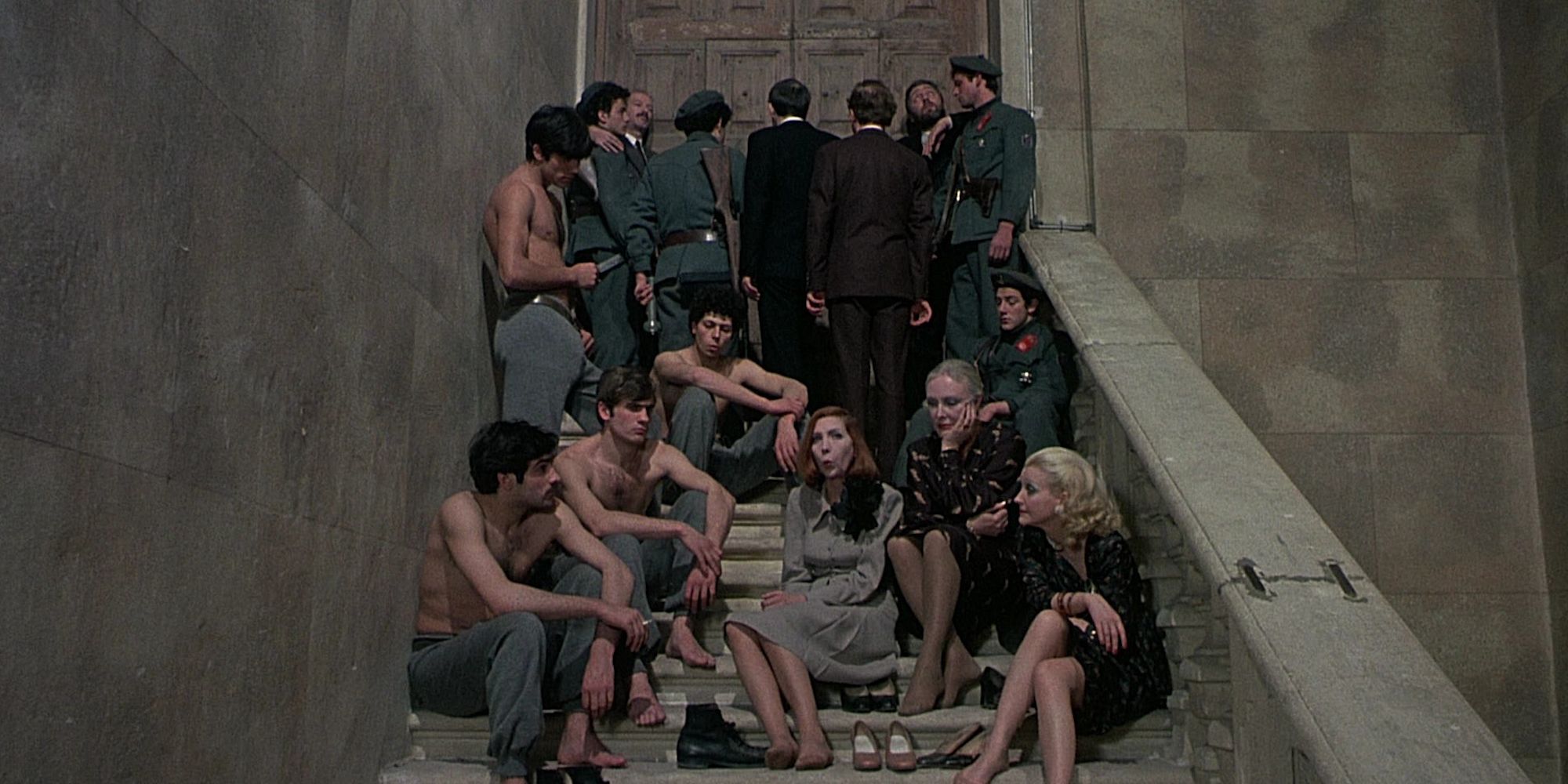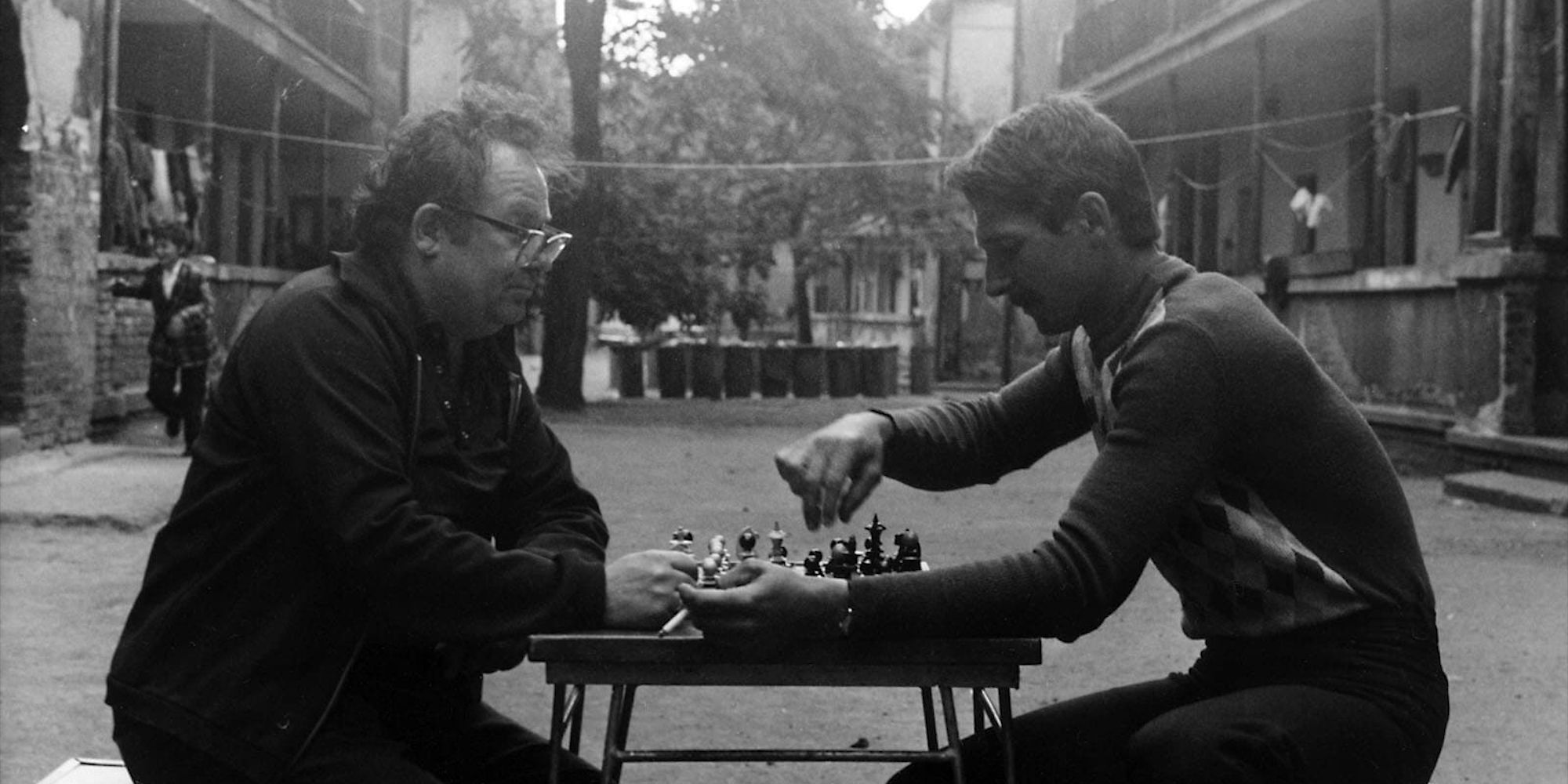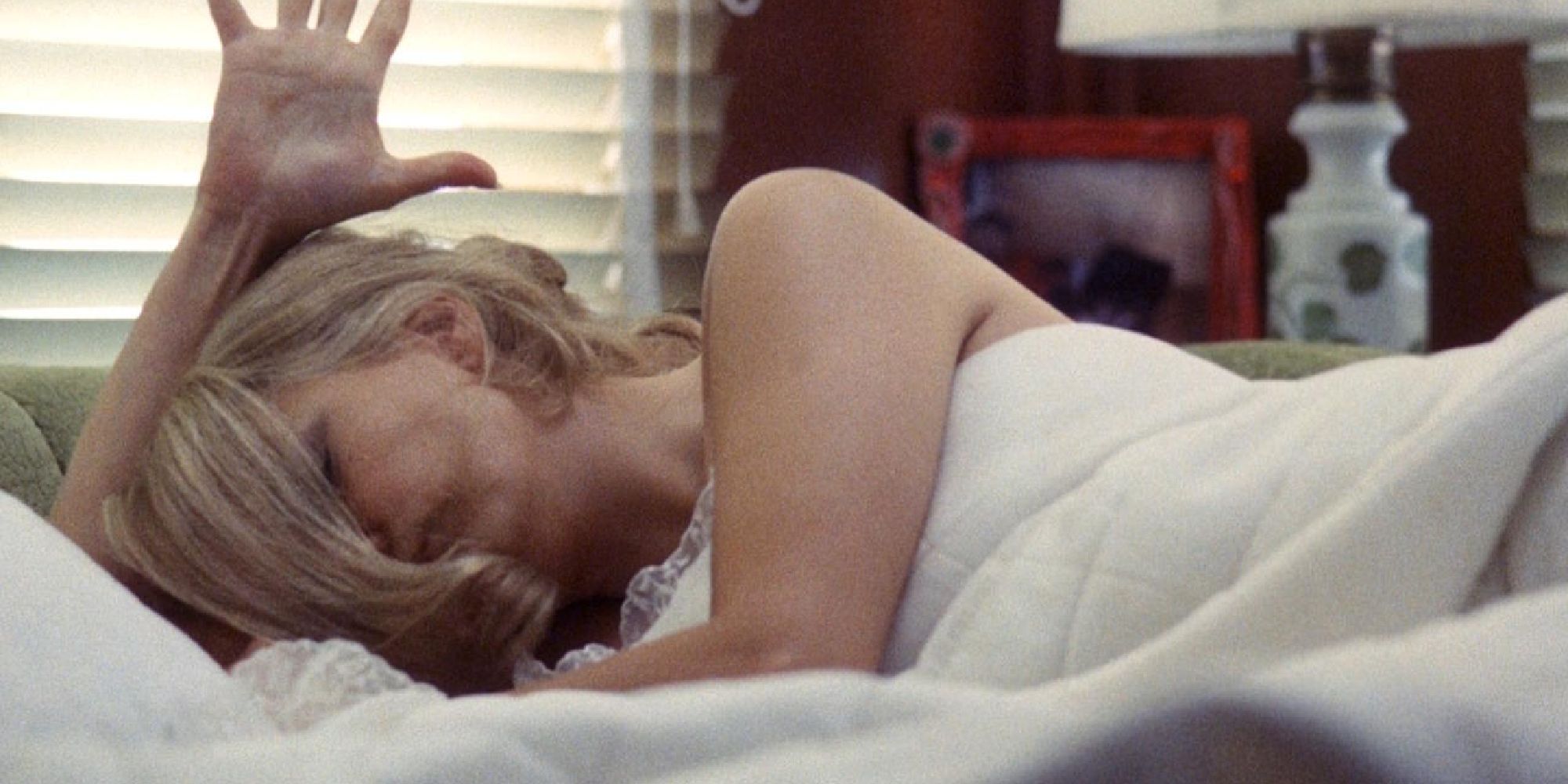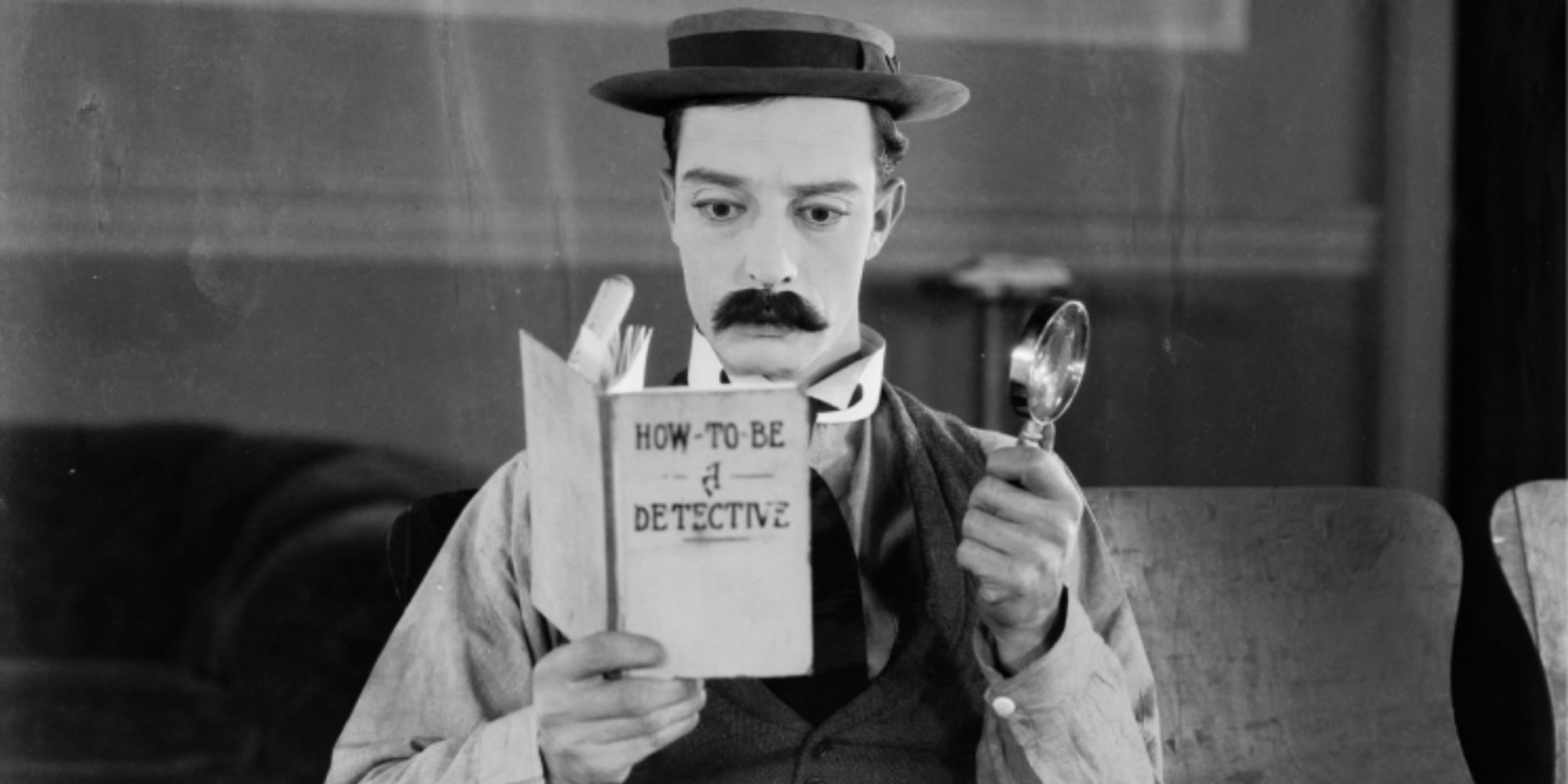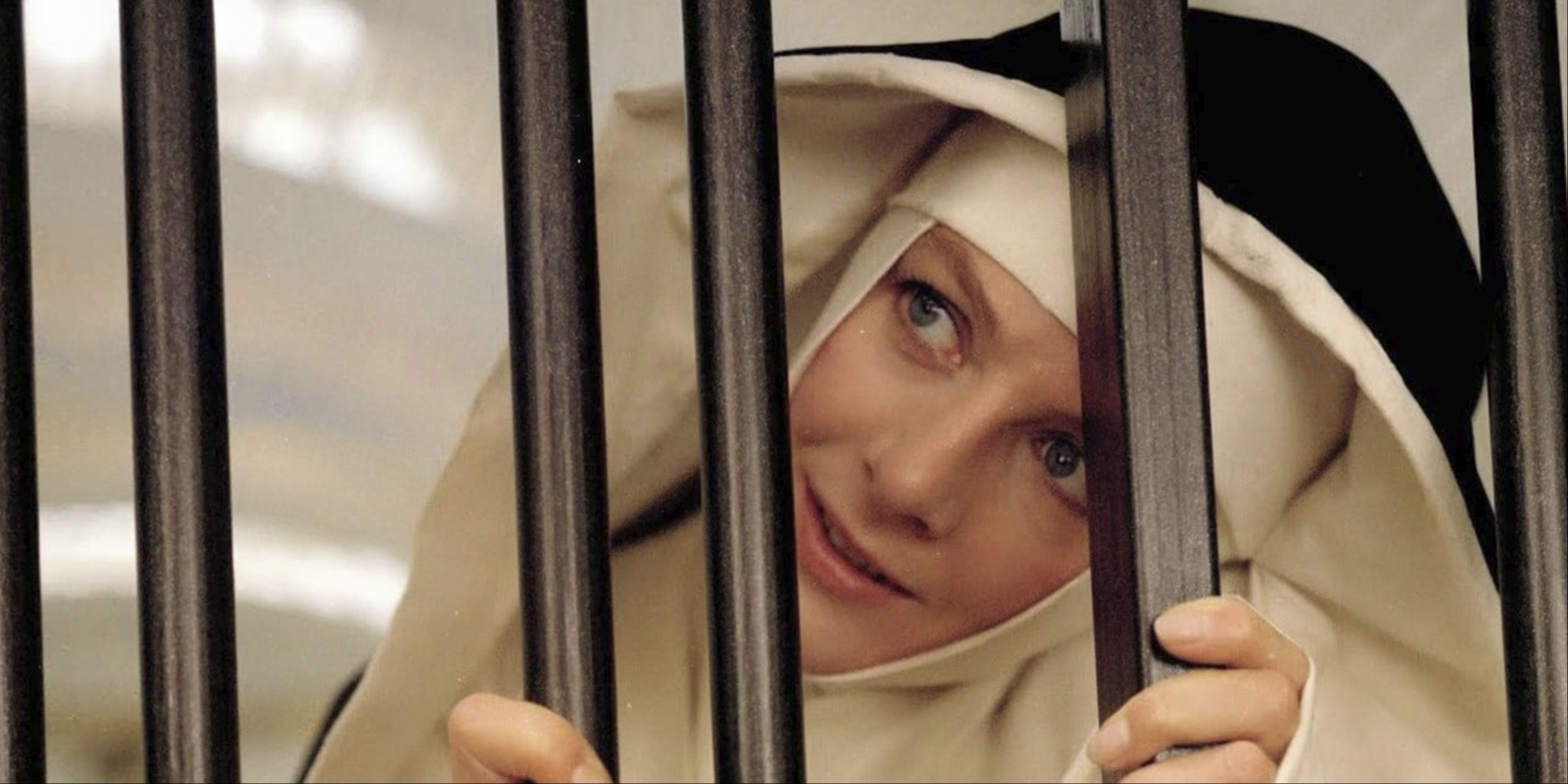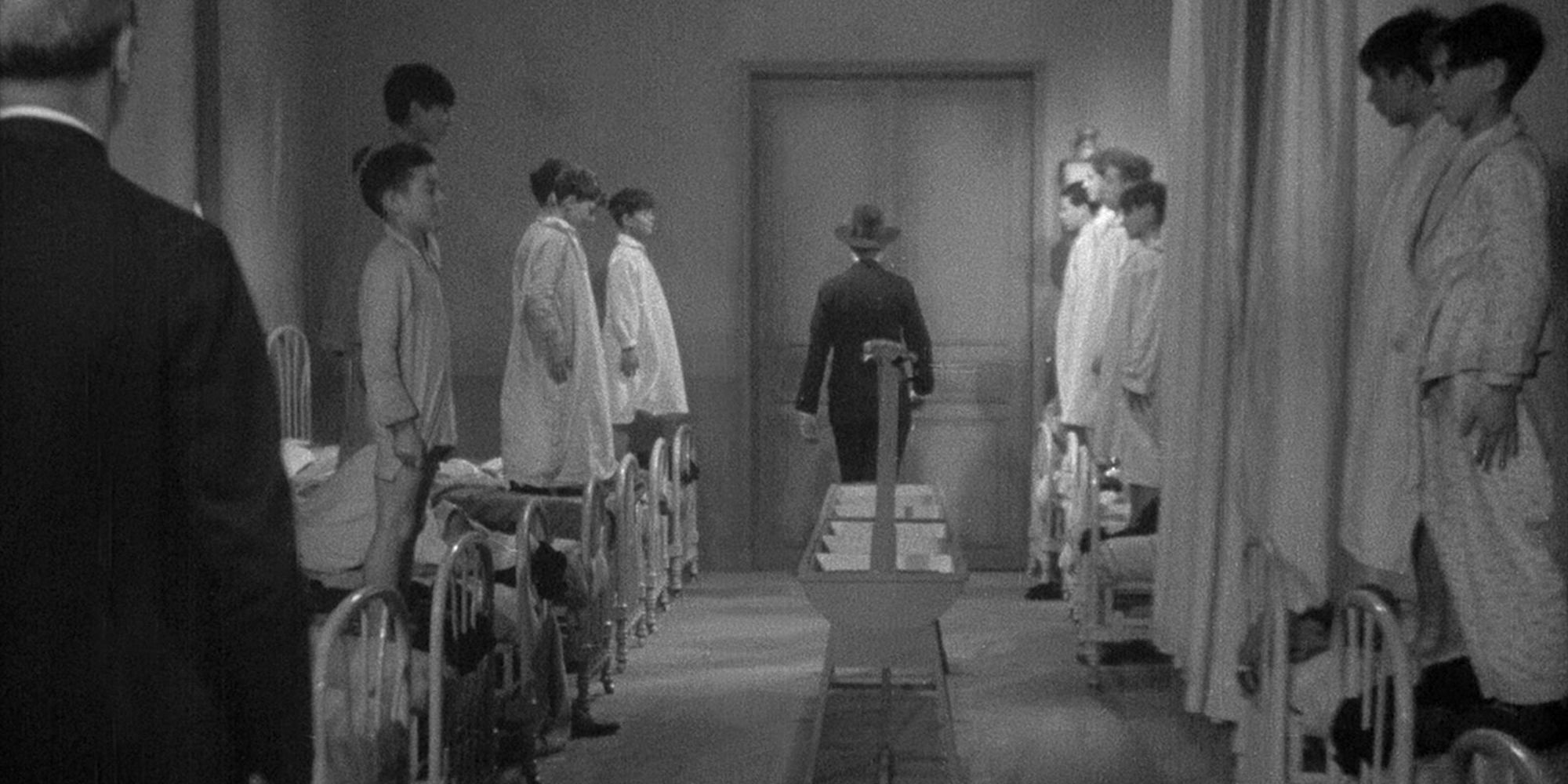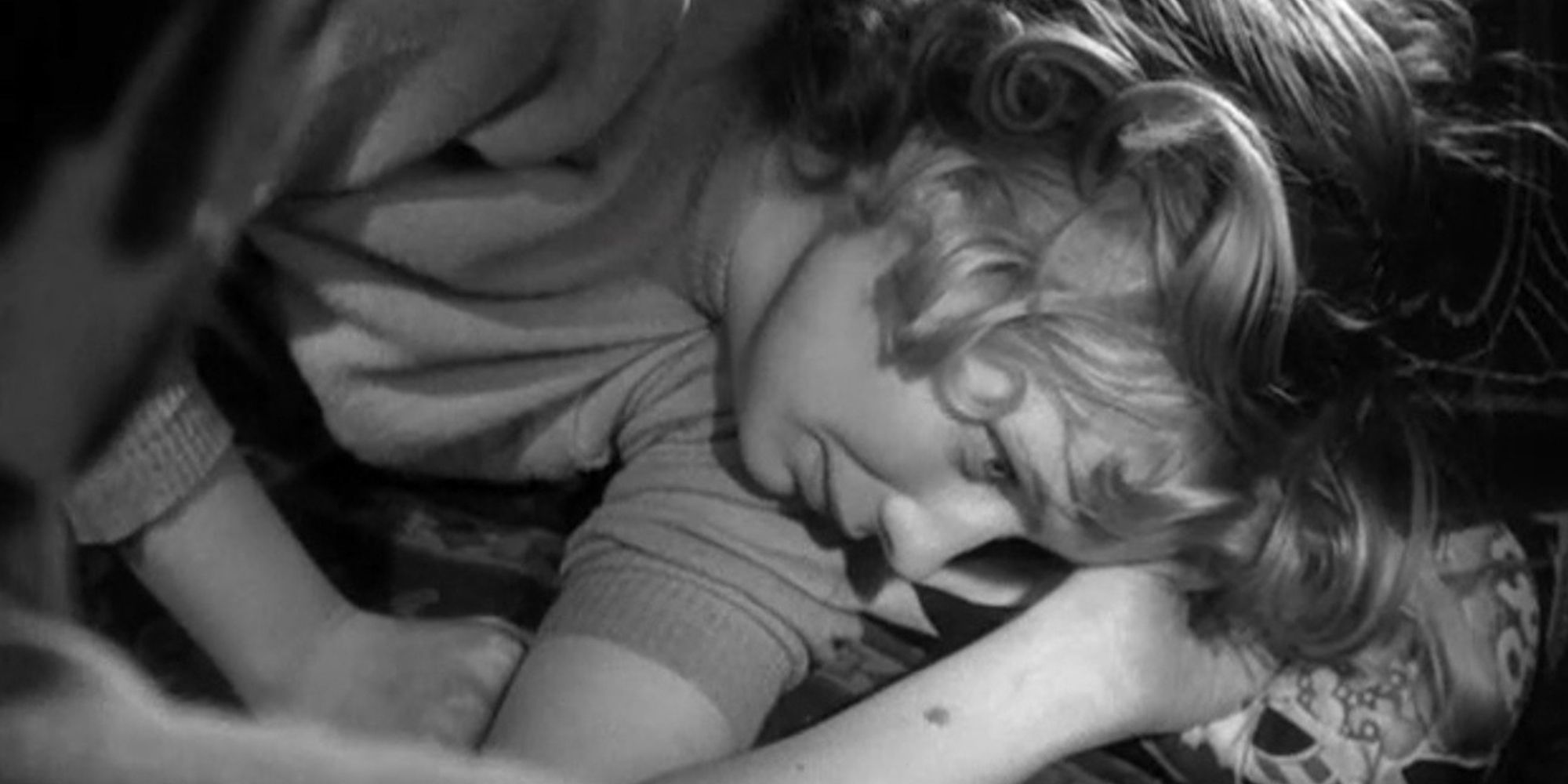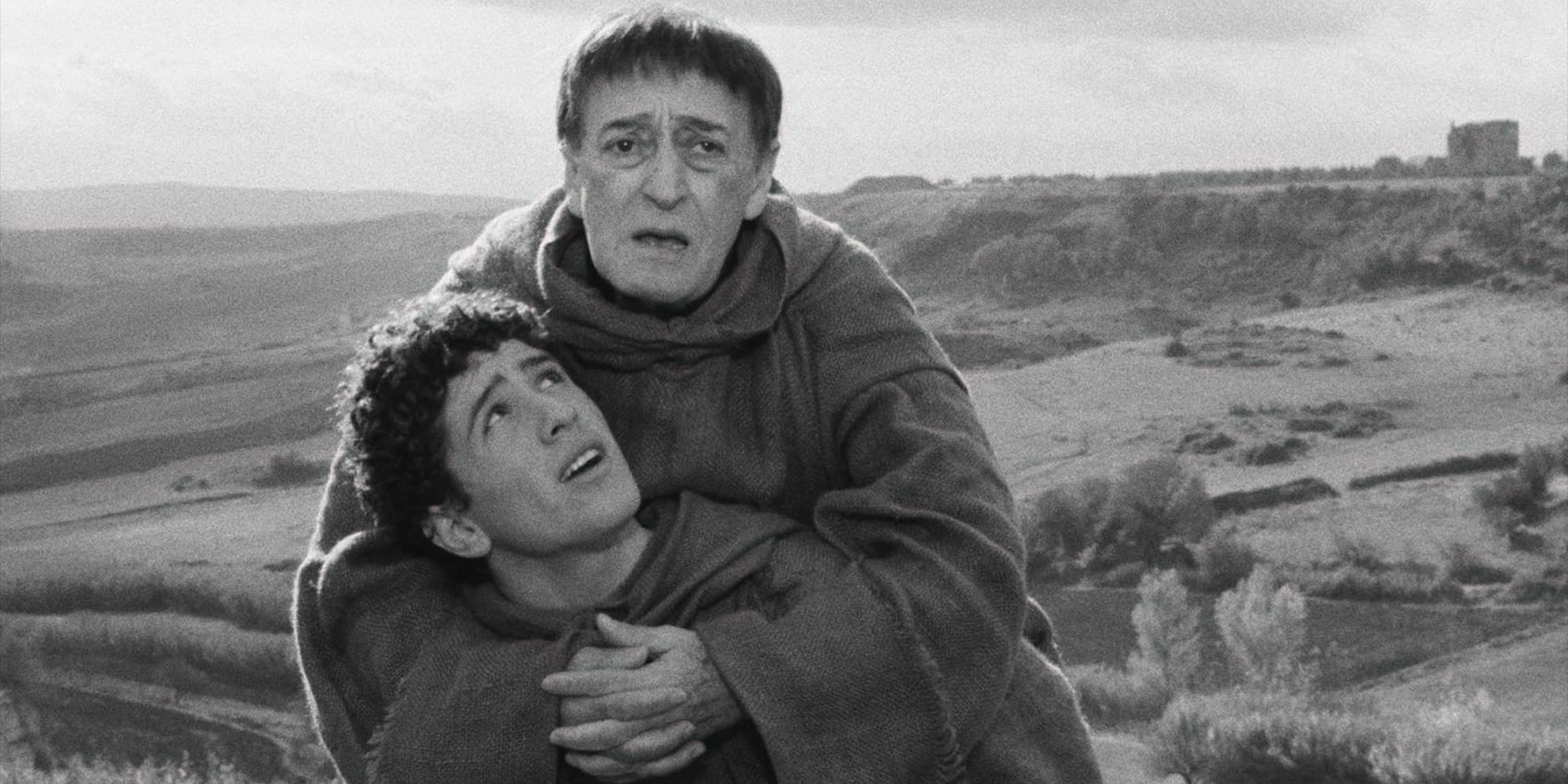Abel Ferrara is the maverick director responsible for violent and controversial gems like Ms. 45, King of New York, and Bad Lieutenant. He also helmed the solid 1993 Body Snatchers remake and the 2019 drama Tommaso, starring Willem Dafoe. Although not all of his films were successful on release, Ferrara’s work went on to influence subsequent filmmakers like Quentin Tarantino and the Safdie brothers.
Ferrara himself has spoken at length about the movies that inspired him. Unsurprisingly, they include many brutal and psychologically intense works that rhyme with his own filmography. Writing about his 2022 top list for Sight & Sound, Ferrara said, “It’s been a long time since I have seen any of these films, but the shadow they cast over me is long and dark, and getting longer and darker.” Odds are, Ferrara’s fans will appreciate their darkness as well.
10 ‘The Battle of Algiers’ (1966)
Director: Gillo Pontecorvo
This historical film dramatizes the Algerian War of the 1950s, in which Algerian rebels fought for independence from the French. In particular, it explores the guerrilla warfare and tactics employed by both the Algerian National Liberation Front (FLN) and the French paratroopers in a harrowing battle for control of the capital city. With a documentary-style approach in the tradition of Roberto Rossellini, The Battle of Algiers immerses viewers in the gritty urban fighting, showcasing the desperation, suffering, and moral complexities of the conflict.
The film continues to be held in high regard, and it is often cited as the best on-screen depiction of an insurgency. Ferrara praised its authenticity and dedication to realism. “It’s a passion for the real deal. I mean, you grow up on films like The Battle of Algiers and Salò and Sam Fuller, you know — I could go down the list — there’s a passion for a certain kind of film,” he said.
Watch on Criterion
9 ‘3 Women’ (1977)
Director: Robert Altman
The three titular women here are Millie Lammoreaux (Shelley Duvall), a self-absorbed therapist at a senior care facility; her timid roommate Pinky Rose (Sissy Spacek); and Willie Hart (Janice Rule), the pregnant wife of the owner of the apartment complex where they all live. Willie spends her days in silence, painting mysterious artworks. After a suicide attempt, Pinky begins imitating Millie, and their building becomes a pressure cooker of desire, neuroses, and stolen identity.
3 Women is one of Robert Altman‘s strangest and most psychologically rich movies, seeming to operate on a kind of dream logic. It works thanks to the colossal lead performances, particularly from Duvall. She simultaneously portrays Millie as vapid and faux-confident, while also hinting at the real personality beneath the surface. She won the Best Actress award at Cannes for her efforts. In 2022, Ferrara included 3 Women on his top ten list for Sight & Sound.
3 Women
- Release Date
- April 3, 1977
- Runtime
- 124
Rent on Amazon
8 ‘Salò, or the 120 Days of Sodom’ (1975)
Director: Pier Paolo Pasolini
Perhaps the most banned art film ever made, Salò tells the story of four powerful libertines who, in a secluded villa, subject a group of kidnapped adolescents to horrific acts of sexual and psychological abuse. Pasolini draws on writings by Marquis de Sade but changes the setting to the waning days of fascist Italy. In the process, the central characters become stand-ins for the darkness that engulfed Europe in the mid-20th century.
This is a frightening and deeply philosophical movie, referencing everything from Nietzsche to Dante‘s Inferno. It pulls no punches when it comes to depicting brutality, earning it both praise and scorn. Ferrara is a massive fan of Pasolini, describing him as a formative influence. He even directed a documentary about the filmmaker in 2019. “[Pasolini] is an expression of freedom, an expression of the individual,” Ferrara says. “He is part of the tradition and at the same time he created a tradition […] That is why I call this guy a maestro.”
Buy on Amazon
7 ‘Family Nest’ (1979)
Director: Béla Tarr
Family Nest was the feature debut by Béla Tarr, director of bleak epics Sátántango and Werckmeister Harmonies. It’s a quintessential example of his early work, with its grim storyline and social critique. The movie centers on a young couple who are forced to move in with the husband’s parents due to financial pressure. Their house becomes a site of never-ending conflict, as the husband’s father tries to manipulate his son and tensions boil over. At times, their family drama borders on horror.
Although Family Nest is a portrait of these characters, it’s also a commentary on Hungarian society as a whole in the late ’70s. At the time, the country was under the rule of the authoritarian, Soviet-aligned government. Work was scarce, freedom was limited, and the future looked dim. Ferrara clearly has a soft spot for these kinds of depressing movies, naming it as one of his all-time favorites.
Buy on Amazon
6 ‘A Woman Under the Influence’ (1974)
Director: John Cassavetes
A Woman Under the Influence is one of Cassavetes‘s most piercing studies of a troubled marriage. Gena Rowlands stars here as Mabel Longhetti, a housewife who suffers a psychological breakdown. Her heavy drinking, strange behavior, and affairs cause untold tension in the household. Her husband Nick (Peter Falk) does not know how to deal with her, eventually deciding to have her institutionalized. However, the film suggests that Nick may be as emotionally unbalanced as Mabel.
Realism and emotional intensity are at a premium here, to the point that the film is at times difficult to watch. Ferrara praised Cassavetes’s entire filmography but singled out A Woman Under the Influence as his favorite. “The films are so powerful, all of them, and then the work of his old lady, Gena Rowlands, is incredible too. A Woman Under the Influence is the masterpiece of masterpieces. When I revisit those films now, they’re better than ever,” he said.
A Woman Under The Influence
- Release Date
- November 18, 1974
- Director
- John Cassavetes
- Cast
- Gena Rowlands , Peter Falk
- Runtime
- 155
Watch on Criterion
5 ‘Sherlock Jr.’ (1924)
Director: Buster Keaton
Sherlock Jr. may be the sole sunny entry in Ferrrara’s Sight & Sound top ten. This silent comedy follows the misadventures of a projectionist (Buster Keaton) who dreams of becoming a detective. When he is falsely accused of theft, he enters the world of the movie he is projecting, transcending the boundaries of reality and fiction to solve the crime and clear his name.
Considered one of Keaton’s defining works, Sherlock Jr. crams a lot of heart, physical comedy, and surprisingly surreal imagery into its lean 45-minute runtime. As one would expect, Keaton’s gags are top-notch. Several of them have been endlessly imitated, like the scene where he slams on the brakes of his car, causing the chassis to stop but the rest of the car to keep speeding on. Other stunts were shockingly dangerous, such as one where a wave of gushing water washes him onto a train track (a feat he performed without safety gear). Tom Cruise has nothing on that.
Sherlock Jr.
- Release Date
- April 21, 1924
- Director
- Buster Keaton
- Cast
- Buster Keaton
- Runtime
- 45
Watch on Kanopy
4 ‘The Devils’ (1971)
Director: Ken Russell
Almost as controversial as Salò, The Devils is a historical horror-drama set in 17th-century France and inspired by real events. The cunning and sexually repressed nun Sister Jeanne (Vanessa Redgrave) falsely accuses the priest Urbain Grandier (Oliver Reed) of witchcraft. As mass hysteria and religious fanaticism grip the town, Grandier is subjected to a scandalous trial and wince-inducing torture.
The film uses this premise to examine not only religious fervor but dogmatism of all kinds, including political persecution. There are some truly shocking sequences here, both violent and blasphemous, though that’s by design. As director Ken Russell has said: “The Devils is a harsh film—but it’s a harsh subject.” The film was highly divisive, lambasted by some critics and dubbed a masterpiece by others. Ferrara said that he “f—ing adored” The Devils, although he lamented Warner Bros.’s decision to censor the film in a subsequent release, calling the move “heartbreaking”.
The Devils
- Release Date
- July 16, 1971
- Director
- Ken Russell
- Runtime
- 111
Watch on Criterion
3 ‘Zero for Conduct’ (1933)
Director: Jean Vigo
At a strict and oppressive boarding school, a group of young boys finally have had enough. Fed up with the stultifying conditions, they decide to revolt and stage a rebellion. They take over the school, winning a brief moment of freedom. Naturally, all manner of mayhem ensues, and the authorities don’t take their antics lying down. The film is highly autobiographical, drawing on director Jean Vigo‘s own school experiences.
Zero for Conduct is anti-establishment to the core, with an infectious and anarchic spirit. The French government took a dim view of this, banning the movie until 1945. It’s just 41 minutes long, but jam-packed with food for thought and striking imagery, including a memorable slow-motion pillow fight. Its themes and visual daring went on to inspire future classics, including François Truffaut‘s The 400 Blows and Lindsay Anderson‘s If… Ferrara named it as an all-time favorite on his 2012 Sight & Sound poll. Be sure to check out the 4K restoration.
Watch on Criterion
2 ‘Prison’ (1949)
Director: Ingmar Bergman
The legendary Ingmar Bergman gets meta with this early work, crafting a borderline surreal drama about the filmmaking process. The main character is writer Thomas (Birger Malmsten) who is approached by his old math teacher with a pitch for a movie: the Devil announces that the Earth itself is hell. Thomas isn’t interested, but the subsequent drama involving his wife (Eva Henning) and a teenage sex worker (Doris Svedlund) suggests that there may be some truth to the teacher’s idea.
While generally not considered one of Bergman’s masterpieces, Prison does have its admirers. The film’s defenders praise it for its exploration of morality, its bold cinematography drawing on Expressionism, and the intense dream sequence involving a forest made out of people. It hints at the existentialism its creator would explore more deeply on later projects. All the more impressively, Bergman made the film on a budget of just $ 30,000. Ferrara named it as an all-time favorite on his 2012 Sight & Sound poll.
Buy on Amazon
1 ‘The Hawks and the Sparrows’ (1966)
Director: Pier Paolo Pasolini
A working-class father (Totò) and his son (Ninetto Davoli) embark on a journey through the Italian countryside. Along the way, they encounter a talking crow who recounts the fable of two friars (also played by Totò and Davoi), one of whom is blessed with the ability to communicate with birds. The friars are instructed to preach the gospel to both the hawks (representing the powerful) and the sparrows (the weak). The movie then pivots back to the main story, where the father and son encounter a host of colorful characters, all of whom represent different classes and aspects of society.
The Hawks and the Sparrows is Pasolini’s most lighthearted movie, featuring a lot of humor and whimsy (Totò was one of Italy’s most celebrated comic actors, for example). However, it’s still chock-full of allegory and weighty themes, involving religion, Marxism, class conflict, and family. The surrealism serves as a vehicle to poke at Italian society and its contradictions. Ferrara included the film on his 2012 Sight & Sound list.
Watch on Criterion


